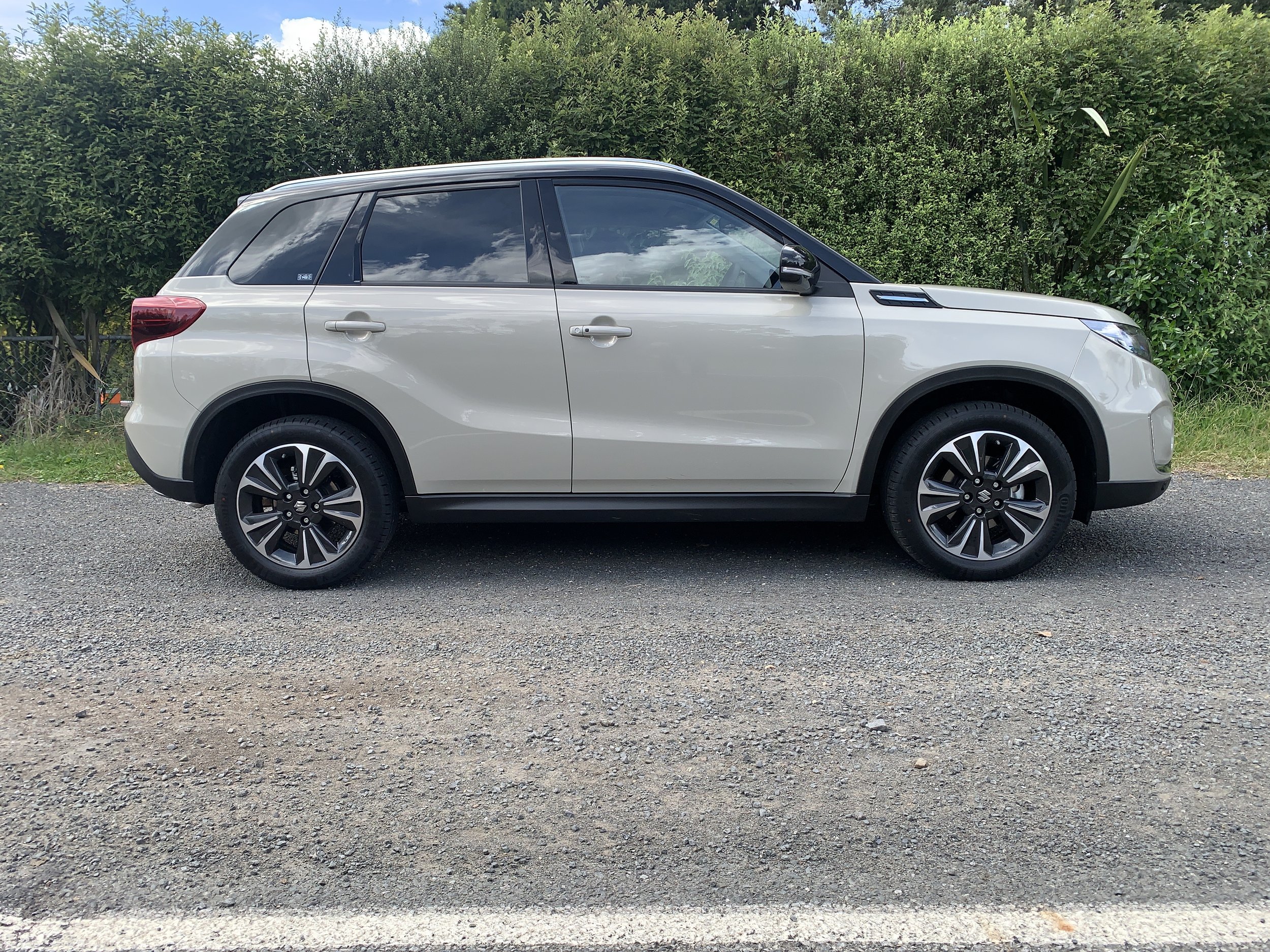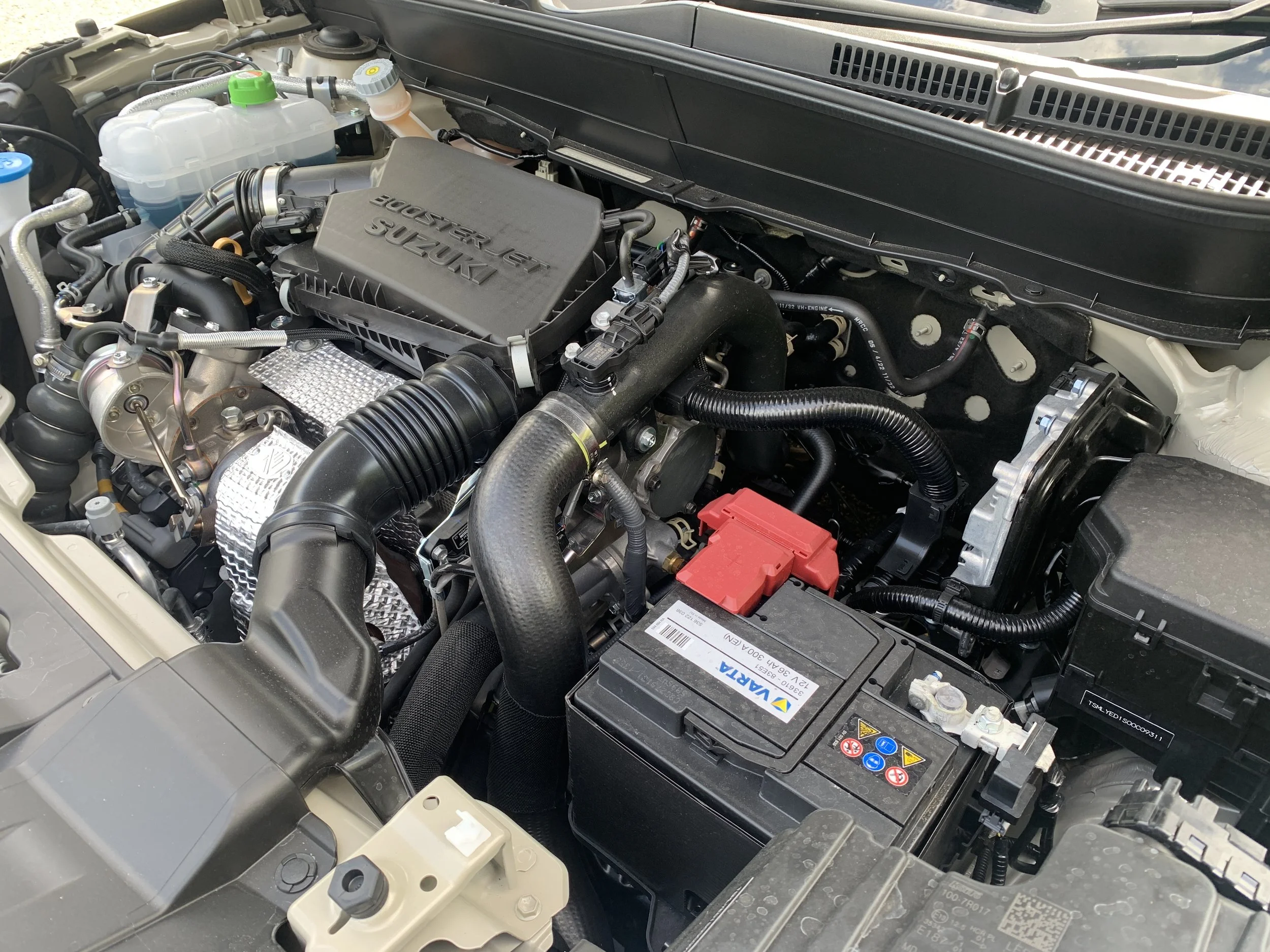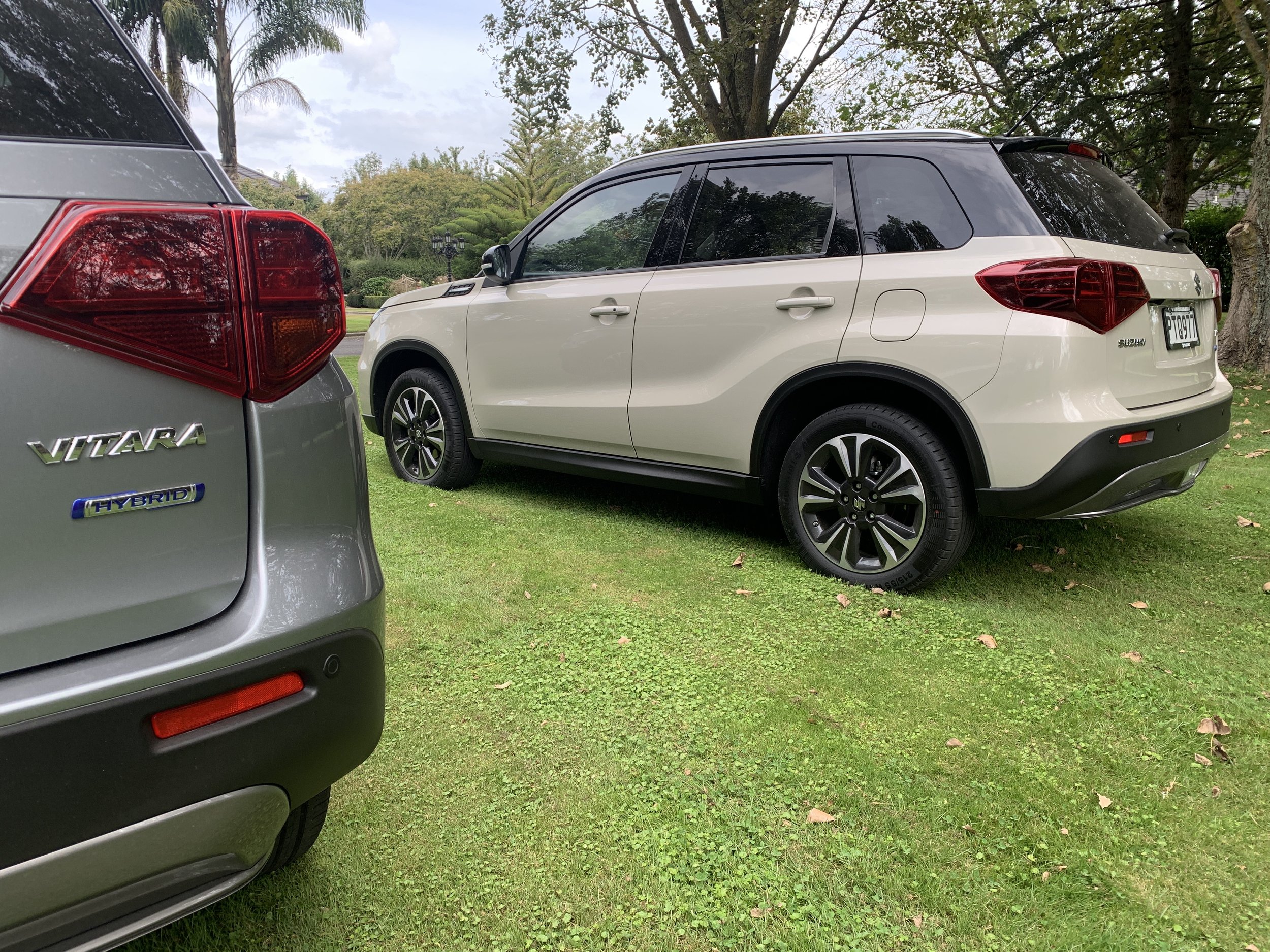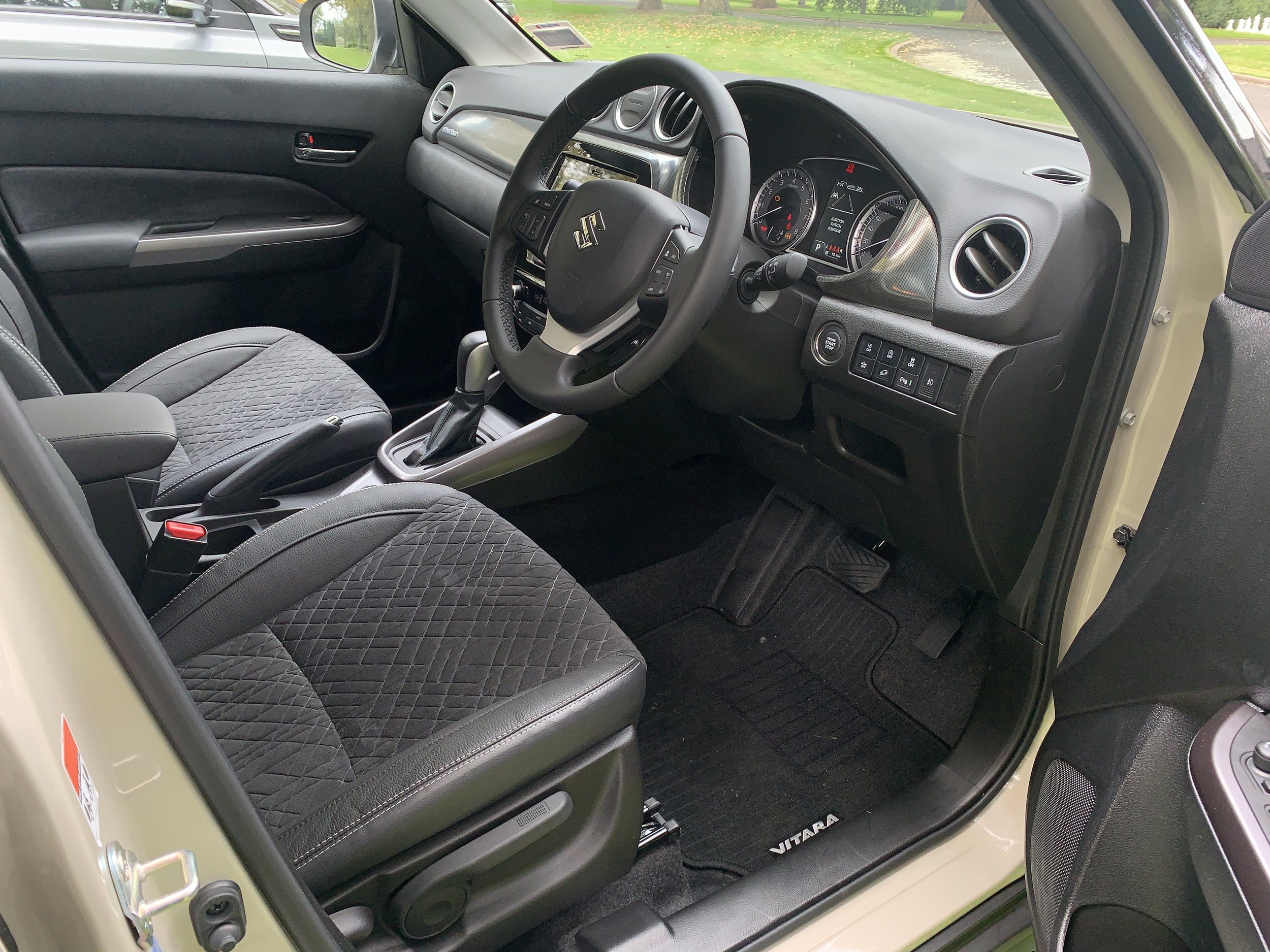Suzuki Vitara hybrid first drive: Sparking up an old stager
/A 48 volt system adds extra zap, but is it enough to utterly re-energise this well-established compact sports utility wagon?
RUN ‘Suzuki hybrid’ as a Google search term and you’ll be hit by an avalanche – it’s only when refining to New Zealand that the choice calms down.
Still, one hit has become two. Having found strong consumer support for a hybrid version of the 1.2-litre Swift hatchback, Suzuki New Zealand has now doubled its hybrid choice with introduction of a similarly configured edition of the Vitara.
Badging is the biggest change in look for the popular compact five-door sports utility wagon. The action is all under the bonnet. It’s a matter of marrying the familiar turbocharged petrol 1.4-litre to 48 volt setup, comprising a small battery-fed electric motor.
Electric saves at the pumps, but adds to the bottom line. The hybrid in manual JX and an automatic JLX, the latter in front and Allgrip all-wheel-drive, the first front-drive only, are $39,990, $41,990 and $44,990 respectively before tempting Clean Car rebates, which range from $2851 for the cheapest to $1614 for the auto all-paw.
Still, at full RRP they carry a premium of between $3000 to $6000 over the fully petrol-fed 1.4-litre editions capturing most Vitara buyer interest these days. And local Suzuki high-ups were keen to impress during the launch that most of their buyers cap their spending at $35,000. Given that, it’ll be interesting how well they’re received.
On that matter, though, the fact that three new versions makes the Vitara family 10-strong is a temporary thing. The non-turbo 1.6-litre four-cylinders as well as the fully petrol 1.4s - four derivatives in two-wheel-drive, the remainder in all-wheel-drive - are on borrowed time.
Wanganui-based Suzuki has stopped shipping in the 1.6s and reckons it’ll exhaust local stocks within a couple of months. It’s also quitting the wholly petrol 1.4, but that process will take longer; clearance by year-end is the target. In 2024, though, Vitara will be pure hybrid.
Even though it makes this the most expensive Vitara to hit NZ, the new engine is nonetheless a promising choice as it makes it the most red-blooded yet also Greenest-themed Vitara version.
With 95kW and 233Nm, it is more powerful than the 1.6-litre, which makes 86kW and 156Nm and the 1.4-litre turbo, which knocks out 103kW and 220Nm.
In a short drive of the JLX models, performance wasn’t hugely stepped up from a 1.4-litre petrol I’d driven earlier, though it did feel stronger at the bottom end, required fewer revs to hold at 100kmh and was quieter. Perhaps the six-speed auto was also smoother in its changes.
It seems reasonable to imagine the system will be more relevant to urban driving, which wasn’t undertaken, than the open road running we undertook, though Suzuki testimony suggests it is enabling and influencing to some degree in pretty much any driving situation.
What’s more relevant, given the current climate (in every sense), is that it’s clean and frugal. Proper assessment will have to wait until a decent driving stint, but the maker’s data looks good.
Respective cited economies and emissions for the hybrids, as measured on the WLTP-3 scale, are 5 litres per 100km for the manual and 5.6-6.0 L/100km for the autos and 112 (manual), 125 (front-drive auto) and 136 grams (AllGrip) per kilometre in CO2 count. Before now, the cleanest and most fuel efficient Vitara has been the JLX manual front-drive, with 151g/km and 6.4L/100km.
As good as those figures are, they’re not the best in this vehicle. While Japan’s smallest mainstream car brand has yet to create a plug-in hybrid and won’t have a fully electric car (likely based on a concept recently revealed in India, where it’ll be built) out for at least two more years, it has been dabbling with mild-sided electric assist for some time.
In a global reference, it can sell lower-voltage mild-hybrids, such as the Vitara and Swift we get, to Toyota-style (actually, Toyota-provisioned) 'full' hybrids.
If you’re wondering about the difference, it’s that the mild-hybrid models cannot drive the wheels on electric power – and use the electric motor to reduce load on the petrol engine – whereas the full hybrid SUVs can, and save more fuel as a result. It also sells rebranded versions of the Toyota Corolla hybrid wagon and Toyota RAV4 plug-in hybrid in Europe, as the Swace and Across.
The tech chosen for New Zealand is one originally designed for the United Kingdom, hence why these Vitaras stand out from other NZ stock in having the wiper and indicator wands the ‘wrong way around’.
There’s a version of the same system in India, which now produces more Suzukis than Japan or Hungary (the supply point for the NZ car), that blends an electric motor and a 1.5-litre four-cylinder engine backed by a CVT auto to deliver 3.6L/100km, but that goes into a Grand Vitara not available here. There’s another in Europe that backs the same mechanicals to a six-speed auto for much the same consumption as the NZ-spec cars.
Suzuki NZ is still mulling over another kind, categorised as a full hybrid. Also designed for the UK, it actually has ability to run a short distance on electric alone. That sounds promising, but it’ll also ask buyers to put up with a fully-automated manual transmission that hasn’t been well-received by overseas’ testers. It might also yet bring in an S-Cross hybrid.
The hybrid drivetrain seems to give the Vitara a lift and Suzuki NZ is confident the concept will stand up well in technical comparison with cars it thinks will become candidates for cross-referencing. For my money, they’d have to include the Toyota Yaris Cross, the Ford Puma, the Peugeot 2008, the Opel Mokka, the Kia Stonic and the Volkswagen T-Cross.
In any appraisal that considers more than just efficiency, of course, there’s no doubting how the Vitara otherwise stands out.
It’s a bit disconcerting to hear Suzuki NZ admit the factory message is that there is no plan to replace this model any time soon. As much as the 48v system brings it up to technical pace, time at the Vitara’s wheel also reinforces that all the above-mentioned potential rivals are newer in look and feel.
It’s debatable if the Vitara is utterly let down by its age, but the wrinkles are definitely showing, not least in the cabin. It’s functionally good, with comfortable front seats and a decent enough driving position, helped by a reach-and-rake adjustable steering wheel, and there's no doubting that everything is very well bolted together.
But the materials Suzuki uses, though undoubtedly robust, are looking tired indeed. Some seem downright cheap. The main analogue instruments are fine, but the digital screen in between them, in spite of offering much useful information about the hybrid’s state, is awkward in its layout and tricky to use as you have to push the small trip reset button - mounted on the side of the instrument panel - to change anything. The touchscreen in the centre of the dash is also fiddly and the graphics are old-hat. At least you can plug in your phone and use Apple CarPlay or Android Auto, which does help.
It’s also a car compromised by older packaging techniques. Put anyone tall in the front and the rear seat leg space is significantly reduced and boot capacity is modest. Simply, there are others that are able to do it better.
There’s plenty of standard safety equipment, including that active cruise control, lane departure warning, traffic sign recognition, two ISOFIX points in the rear seats, a tyre pressure monitoring system, curtain airbags and a driver's knee airbag.
The car’s age is about to influence its safety rating. Vitara was tested by EuroNCAP back in 2015, a year before it came on sale to NZ, and it scored an impressive full-house five-star rating. However the safety goalposts have moved considerably since and that score will be retired at the end of the year. From thereon, it will have a Vehicle Safety Risk Rating, a totally different deliberation.
Despite supply constraints, Suzuki NZ sold 1400 Vitara models in the last 12 months and it expects to exceed 1600 units in 2023. All the same, it bucks the trend - most brands cite SUVs as their top sellers and say passenger care are yesterday’s news. Quite the opposite here. Vitara is well overshadowed by the Swift five-door hatch, which accounted for more than 50 percent of their 2022 volume of 8494 units and was country’s the top-selling new car in February, with Swift hybrid delivering strongly to that success.
The writer attended this event as a guest of the distributor, with travel, meals and a modest gift provided.




















